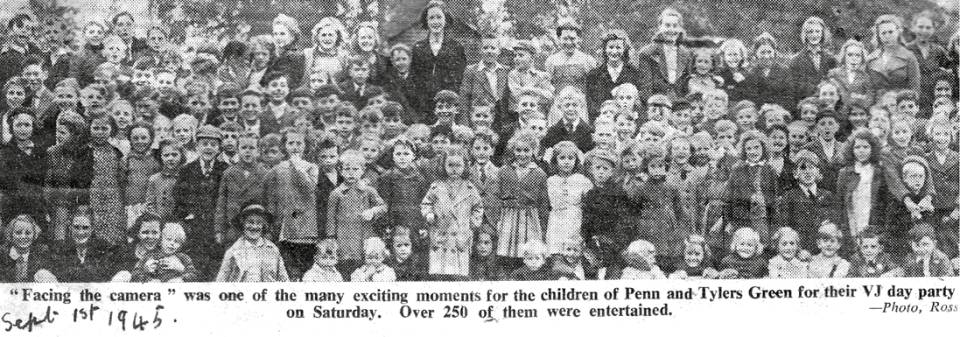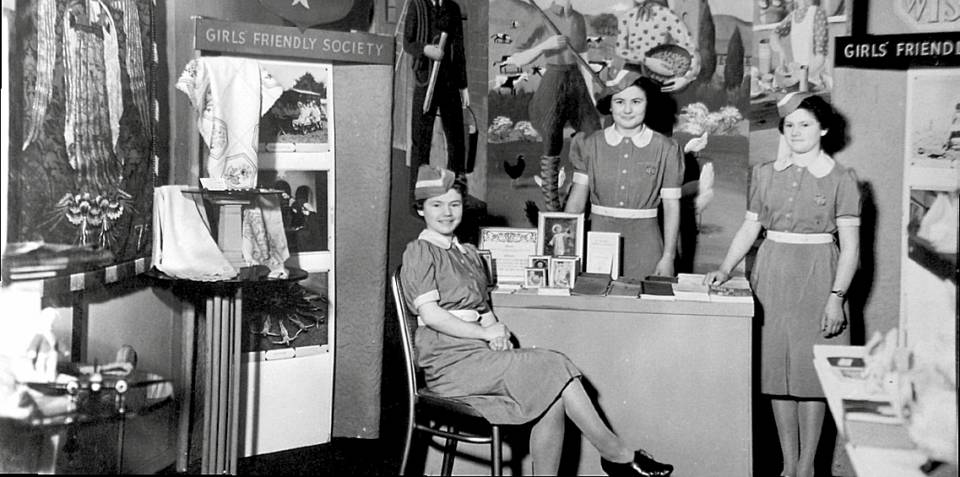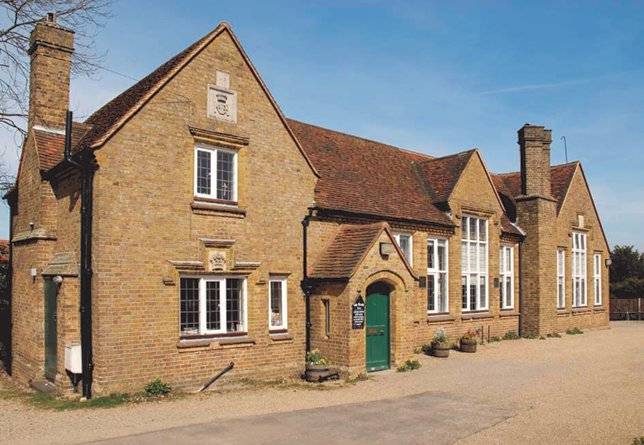This is the final article in the series of recollections by former pupils of Penn Church School (now the Church Hall) from the 1920s to the 1940s. This final account begins when the school shared in the nation’s celebrations after the war. On Friday May 11th 1945 pupils were taken to Beaconsfield to see King George VI and Queen Elizabeth as they passed through by train. At the special school victory sports at Knotty Green cricket club on Saturday 8th June there were prizes and an elaborate tea and in September there was a big party along with Tylers Green children (see newspaper article photo).
A new vicar
At the end of the war new vicar Rev. Oscar Muspratt was appointed and a children’s service alternates with Sunday School every Sunday at 2.30pm. It was the “duty” of parents that their children attend; many would attend more than one Sunday Church activity. The ladies in my interview group spoke very fondly of their involvement in the Girls Friendly Society with Mrs Muspratt. The “GFS” was founded in 1875 with the support of the Anglican church to promote girls’ self-esteem and wellbeing. It supported the war effort and it was reported in the Parish Magazine of 1947 that there was a big rally at the Albert Hall with displays of keep-fit, netball, folk dancing and even sword dancing!
Back in school, in 1945 the inspector records that “the relationship between the Church and the school is a very happy one and full of encouragement.” In 1945 Tony Bates – formerly of Forty Green, and Joy Allen gained certificates for good work. In 1947 Joy won the Bishop’s Prize for Scripture. In 1948 Barbara Baker, the evacuee from London we met in the previous article, received the infants “general ability and good conduct” prize. All my female contributors remember reciting their times tables and still being able to remember them now!
So, did the children enjoy school? Roy Allen’s view is that it was “like a family. I can’t remember anyone not wanting to go to school.”
Dwindling numbers
In the post-war years promised council housing did not materialise and dwindling numbers meant all children were taught together. Peggy Walker (Pusey) recalls the only teacher Miss Mitchell sitting the 6 remaining children in a semi-circle together. One contributor commentated that the scope of what could be taught inevitably narrowed: “there were things that we’d not even done when we went to Secondary School, it was very difficult. You were overwhelmed with all the people”. The school finally closed in 1949 when Mrs Mitchell retired. To counter a sense of loss, it’s worth highlighting the enduring strength in the Church School model to the present day. According to the Church of England website 1 million children are currently educated in C of E schools, and about 15 million people alive today went to one.
An enduring legacy
Inspectors commented that in a small village Church school “education is not simply the imparting of knowledge but the development of character and the capacity to make use of knowledge.” The then vicar, Rev. Muspratt observed that when the Butler Education Act of 1944 created larger schools for older children in towns, “parents who live at a distance have not cared to risk sending the younger children on a long walk by themselves.” I’m left pondering on this shift in the light of the “happy times” of Penn Church School. As a Forty Green resident I frequently reflect on the long walks to school and appreciation of nature described by contributors to this set of articles. The strong Church/School partnership was a resilient one that supported the school and its pupils through challenging times – remember it doubled in size with refugee children. Of school life in general (and the war years in particular) the late Dorothy Bates sums up the strength of character of the pupils “We weren’t pampered, that’s probably why we are as we are now.”
The Church Hall
Do visit the school building which is now the Church Hall if you are passing along the Penn Road. It retains original features such as such as the initials H.G.H after Harriet Georgiana Howe in whose memory the original Girls Working School was founded in 1839. The building also houses the Parish Office and is a community resource. Rather aptly, the building is currently being used by a thriving pre-school. If you do drop in, it may even be that you are fortunate enough to meet a former pupil, several of whom remain current valued members of our Church community. My heartfelt thanks again to all who have contributed to this series of articles.
Parish Newsletter, December 2019 – Zoë Clark



